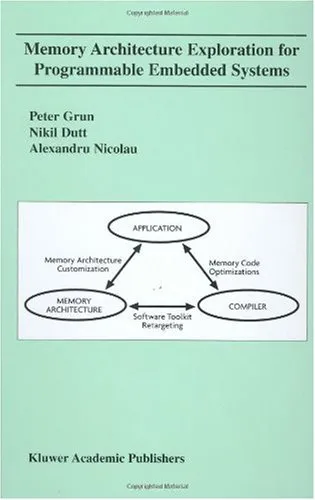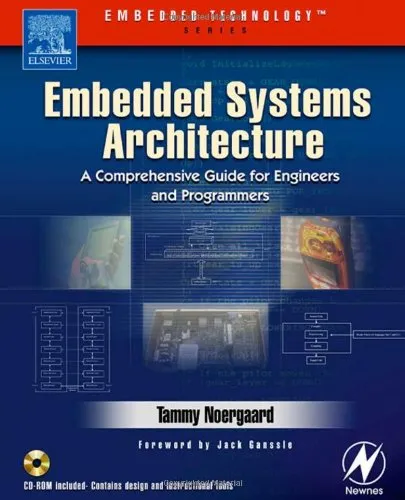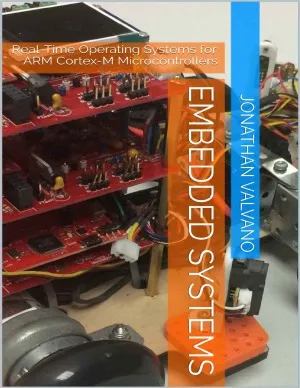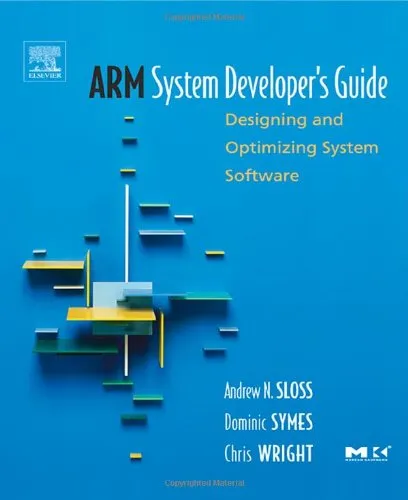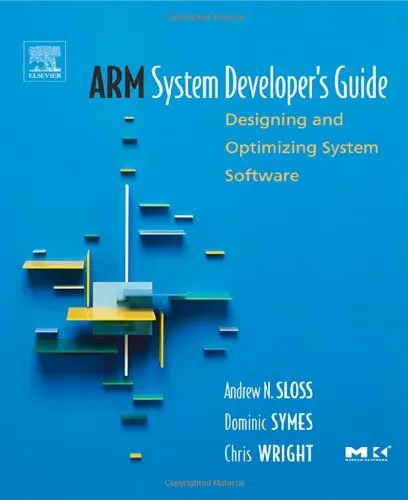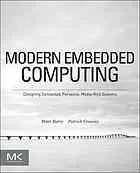Memory Architecture Exploration for Programmable Embedded Systems
4.0
بر اساس نظر کاربران

شما میتونید سوالاتتون در باره کتاب رو از هوش مصنوعیش بعد از ورود بپرسید
هر دانلود یا پرسش از هوش مصنوعی 2 امتیاز لازم دارد، برای بدست آوردن امتیاز رایگان، به صفحه ی راهنمای امتیازات سر بزنید و یک سری کار ارزشمند انجام بدینکتاب های مرتبط:
معرفی کتاب 'Memory Architecture Exploration for Programmable Embedded Systems'
کتاب 'Memory Architecture Exploration for Programmable Embedded Systems' یک راهنمای جامع است که به بررسی عمیق معماری حافظه برای سیستمهای تعبیهشده قابل برنامهریزی میپردازد. این اثر، نوشته سه متخصص برتر در زمینه مهندسی کامپیوتر و سیستمهای تعبیهشده، پیتر گرون، نیکیل د. دات، و آلکساندرو نیکولائو، نه تنها تئوریهای پایه را پوشش میدهد بلکه نگاهی عملی به پیادهسازی و بهینهسازی حافظه در سیستمهای تعبیهشده نیز دارد.
خلاصهای از کتاب
این کتاب به طور جامع به بررسی معماری حافظه برای سیستمهای تعبیهشده میپردازد و راهکارهایی برای بهینهسازی عملکرد این سیستمها ارائه میدهد. از جمله مباحث مطرح در کتاب میتوان به تحلیل معماریهای مختلف حافظه، ارتباط آنها با پردازندهها، و روشهای بهینهسازی مثل cache memory optimization و استفاده از multi-banked memory اشاره کرد. نویسندگان با ترکیب دقیق تئوری و عمل، چالشهای طراحی و پیادهسازی در معماری حافظههای مدرن را مورد بررسی قرار میدهند.
دستاوردهای کلیدی
- شناخت عمیق از ساختار حافظه و اهمیت آن در طراحی سیستمهای تعبیهشده
- تکنیکهای بهینهسازی عملکرد از طریق مدیریت بهتر حافظه
- درک مزایا و معایب معماریهای مختلف حافظه و نحوه انتخاب معماری مناسب
- آزمایشهای عملی و مطالعات موردی برای درک بهتر مفاهیم ارائه شده
جملات معروف از کتاب
"One cannot underestimate the complexity of memory architecture when striving for optimal system performance."
"The interplay between processor and memory architecture defines the ceiling of performance in embedded systems."
چرا این کتاب مهم است؟
با گذشت زمان، کمبود منابع در سیستمهای تعبیهشده به یکی از چالشهای اصلی در مهندسی کامپیوتر تبدیل شدهاند. این کتاب با ارائه بینشهای کاربردی و علمی در زمینه مدیریت و طراحی حافظه، به مهندسان و طراحان سیستم کمک میکند تا با چالشهای پیچیده در این حوزه به طور مؤثرتری مقابله کنند. با تلفیق آخرین یافتهها و تکنیکهای پیشرفته، 'Memory Architecture Exploration for Programmable Embedded Systems' نقشی کلیدی در توسعه دانش فنی و بهبود کارایی سیستمهای تعبیهشده ایفا میکند.
Welcome to an exhaustive exploration of memory architectures in embedded systems, as documented in "Memory Architecture Exploration for Programmable Embedded Systems." This book delves into the dynamic interplay between memory systems and embedded processors, offering cutting-edge insights and practical strategies for developers, engineers, and researchers.
Detailed Summary of the Book
This comprehensive guide addresses the intricate design challenges associated with memory architecture in programmable embedded systems. It offers a wealth of information on the burgeoning complexity and sophistication of embedded systems in modern technological landscapes. Each chapter meticulously unravels diverse components, including cache designs, memory hierarchies, and the integration of memory architecture with processor subsystems.
The book takes readers through an evolutionary journey, depicting how technological advancements have driven the transformation of memory systems. From the early days of rudimentary memory layouts to contemporary multi-level cache hierarchies and the deployment of advanced memory abstraction techniques, this book covers it all. It articulately discusses the trade-offs inherent in memory design, such as latency, throughput, and energy consumption, offering readers a nuanced understanding of how to balance these factors in practical applications.
Key Takeaways
The book is a treasure trove of valuable insights into the architecture of memory systems for embedded applications. Here are several key takeaways:
- Comprehensive overview of memory design principles tailored for programmable embedded systems.
- In-depth analysis of memory performance metrics and the methodologies used to optimize them.
- Exploration of modern design frameworks that leverage memory hierarchies to enhance system performance and energy efficiency.
- Real-world case studies that illustrate the application of theoretical concepts in industrial contexts.
- Strategies for addressing the emergent challenges posed by new technological domains such as IoT and AI-driven systems.
Famous Quotes from the Book
"Emerging technologies continually challenge the limits of traditional memory systems, necessitating innovation and adaptability."
"Memory hierarchy design stands at the crossroads of performance, cost, and energy efficiency, serving as a foundational pillar for system optimization."
"In the realm of embedded systems, the marriage between memory and processor architectures is both an art and a science, demanding both creativity and precision."
Why This Book Matters
This book stands as a seminal resource in the realm of embedded systems engineering. At a time when technology is becoming increasingly embedded in everyday devices, from smartphones to automobiles and medical devices, understanding the inner workings of memory architecture is crucial for driving innovation.
By providing a comprehensive treatment of memory system design, this book equips professionals with the knowledge to push the boundaries of what embedded systems can achieve. It fosters a deeper appreciation of how memory architecture can unlock superior processing capabilities, reduce energy consumption, and enhance user experiences. Whether you are an academic, a practicing engineer, or a technologist, this book serves as both a foundational text and a cutting-edge reference, paving the way for future advancements in the field.
دانلود رایگان مستقیم
شما میتونید سوالاتتون در باره کتاب رو از هوش مصنوعیش بعد از ورود بپرسید
دسترسی به کتابها از طریق پلتفرمهای قانونی و کتابخانههای عمومی نه تنها از حقوق نویسندگان و ناشران حمایت میکند، بلکه به پایداری فرهنگ کتابخوانی نیز کمک میرساند. پیش از دانلود، لحظهای به بررسی این گزینهها فکر کنید.
این کتاب رو در پلتفرم های دیگه ببینید
WorldCat به شما کمک میکنه تا کتاب ها رو در کتابخانه های سراسر دنیا پیدا کنید
امتیازها، نظرات تخصصی و صحبت ها درباره کتاب را در Goodreads ببینید
کتابهای کمیاب یا دست دوم را در AbeBooks پیدا کنید و بخرید
1431
بازدید4.0
امتیاز50
نظر98%
رضایتنظرات:
4.0
بر اساس 0 نظر کاربران
"کیفیت چاپ عالی بود، خیلی راضیام"
Questions & Answers
Ask questions about this book or help others by answering
No questions yet. Be the first to ask!
